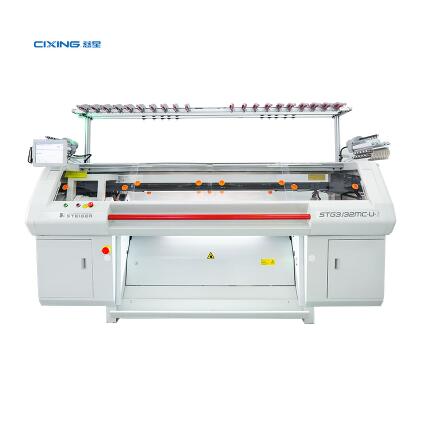Exploring the Use of Flat Knitting Machines in Sustainable Fashion
2024-11-12
Flat knitting machines play a significant role in sustainable fashion by enabling efficient and eco-friendly garment production with minimal waste. Unlike circular knitting machines, flat knitting machines create individual fabric panels in flat rows, allowing precise garment shaping and design flexibility. This precision and adaptability make flat knitting machines an excellent tool for producing sustainable knitwear. Here’s how they contribute to sustainable fashion, their benefits, and their impact on the industry:

1. Reduced Material Waste
One of the primary ways flat knitting machines support sustainability is through "knit-to-shape" technology. This process allows garments to be knitted to the exact shape and size needed, minimizing fabric waste. Instead of creating large panels and cutting them into patterns (which generates scraps), flat knitting machines produce parts that are nearly ready to assemble, which reduces excess fabric waste by up to 30-50%.
2. Use of Eco-Friendly and Recycled Fibers
Flat knitting machines can work with various sustainable fibers, including organic cotton, bamboo, hemp, and recycled fibers. These machines handle these materials efficiently, and the lower material waste further maximizes the environmental benefits of using sustainable yarns.
- Organic and Sustainable Yarns: Organic cotton and bamboo, for example, have a lower environmental impact than conventional cotton and polyester.
- Recycled Materials: By using yarns made from recycled fibers, brands can minimize resource extraction, support circular fashion, and reduce landfill waste.
3. On-Demand and Custom Production
Flat knitting machines enable on-demand production, allowing brands to produce garments only when needed. This flexibility reduces overproduction—a major issue in fashion—since brands can produce smaller batches or even custom pieces based on demand. Customization also reduces waste and returns, as customers receive items tailored to their specifications.
4. 3D and Seamless Knitting
Modern flat knitting machines, especially those with 3D knitting capabilities, allow seamless garment production. Seamless garments have multiple benefits:
- Improved Comfort and Fit: They provide a better fit and higher comfort for the wearer.
- Labor and Energy Savings: By eliminating the need for sewing seams, 3D knitting reduces labor, energy consumption, and the carbon footprint associated with garment construction.
3D seamless knitting also supports complex designs and textures without the additional waste and labor of traditional methods.
5. Energy-Efficient Production
Flat knitting machines generally consume less energy than some other textile manufacturing methods. Advanced machines are designed for energy efficiency, often with settings that optimize power use. By reducing energy consumption in the knitting phase, brands can lessen the carbon footprint of their operations.
6. Localized and Small-Batch Production
Flat knitting technology supports localized production, making it easier to manufacture garments close to where they are sold. This approach shortens the supply chain, reduces transportation emissions, and allows for more responsive production. Smaller batch production also contributes to a more sustainable model by aligning inventory closely with consumer demand.
7. Enhanced Durability and Quality
Garments produced on flat knitting machines are generally high-quality and durable, which encourages longer garment lifecycles. By creating well-made items with careful attention to design and construction, brands can help consumers build wardrobes with fewer, longer-lasting pieces, which is a core aspect of sustainable fashion.
8. Reduced Chemical Use
Flat knitting machines do not require the use of adhesives or binders that some other textile processes do, minimizing chemical exposure. When paired with sustainably dyed or undyed yarns, they support environmentally friendly production practices with fewer pollutants entering the environment.
Flat Knitting Machines and the Sustainable Fashion Industry
The role of flat knitting machines in sustainable fashion goes beyond efficient production. They are helping transform the industry by supporting sustainable materials, enabling on-demand and localized production, and minimizing waste and environmental impact. Many forward-thinking brands are leveraging flat knitting to create sustainable collections, combining high-tech machinery with eco-conscious materials and design philosophies.
In Summary
Flat knitting machines are a powerful tool for sustainable fashion by offering waste reduction, flexible production, lower energy use, and support for eco-friendly materials. These machines provide a pathway for brands to adopt sustainable practices that address waste, resource use, and overproduction while meeting consumer demand for high-quality, responsibly made garments. As the fashion industry continues to prioritize sustainability, flat knitting machines are likely to play an even larger role in driving this change.


